COOKBOOK DEEP DIVE: 'Six Seasons: A New Way with Vegetables' by Joshua McFadden with Martha Holmberg
Vegging out all year long.
Amazingly it’s the New Year – 2023, specifically – which means it’s time to put down the eggnog and pick up the free weights. This holiday season I tried to start my healthy eating pre-January so I wouldn’t feel like as much of a cliché, but the gesture was feeble at best. And now here I am, doing the New Year thing along with everyone else. New Year, New Me, etc etc. Like many people, I’m upping my exercise routines and trying to focus on more plant-centric meals (as opposed to cake-centric days), and whenever I get into this state, I almost always head directly to Joshua McFadden’s incredible cookbook, Six Seasons: A New Way with Vegetables.
The book, which won the 2018 James Beard award for “Vegetable-Focused Cooking Media,” is something of a love letter to seasonality and vegetables (just in case the title didn’t tip you off) and features nearly 400 pages of plant-forward recipes. This is by no means a vegetarian book, and it’s certainly not always a particularly healthy one either, but Six Seasons is an extremely helpful source for veggie inspiration.
McFadden is a Portland-based chef who, aside from having invented the kale salad, has a resume filled with stints in acclaimed restaurants across the country. But it’s his interlude at Maine’s Four Seasons Farm led him down a path of cooking “real food, simple food, in season.” Hence, Six Seasons, which encourages readers to craft dishes centered on vegetables that are in season. And about those seasons — McFadden believes when it comes to produce, there are in fact six, not four, seasons: spring, early summer, midsummer, late summer, fall, and winter.
Conveniently, that’s how he and writer Martha Holmberg organize the cookbook, with each seasonal section subdivided into vegetable chapters. It’s a clever and thematic approach; although, not very user friendly. I suppose McFadden’s aim is that we start with a vegetable in hand and then seek out the appropriate chapter for culinary inspo, but in reality, I usually wind up just leafing through recipes until I find one that fits the type of dish I need to make. Generally speaking, chapters based on dish type — appetizer, side, main, etc. — seem so much more helpful, but veggie cookbook authors just love organizing by produce (see Plenty, Fresh India, and Vegetable Kingdom to name a few). Not a big issue, but a general pet peeve. Normalize useful cookbook organization!
But these are quibbles. The excessive page turning does have its perks — mainly the chance to spy Laura Dart’s gorgeous food photography. Her work has me clamoring to cook nearly every passing recipe, but that’s also because every passing recipe has so far turned out to be, well, excellent. Credit must be given to McFadden’s precise and clear directions. He tells us how something should taste and knows how to guide us to the proper flavor destination. Furthermore, McFadden pairs ingredients expertly, sometimes in unexpected ways such as with his Asparagus, Nettle, and Green Garlic Frittata (which admittedly I haven’t tried but am very fascinated by).
What I’m trying to say is that the track record with Six Seasons is strong, and even though I’ve made many of McFadden’s dishes, there are still so many more to explore. Here, ambitiously, is a rundown of everything I’ve cooked from the book so far, written in the order which they appear in the book.
Citrus Vinaigrette (p. 41)
Bright, bold, simple. It pairs surprisingly well with air-fried cauliflower.
Spiced Green Sauce (p. 44)
Made as part of a squash dish that I’ll describe later, this sauce is a zingy condiment that works nicely on meats or toast.
Tonnato (p. 45)
The bad pitch: imagine an excellent tuna salad, but in sauce form. The good pitch: imagine a bright, briny, irresistible spread that you won’t be able to get enough of. This tonnato is one of my go-to recipes in the book. I serve it with crudites as a healthy hors d’oeuvres or simply spread it on sourdough for a light and sophisticated lunch. Make this.
Basic Vegetable Pickle Brine + Pickles (p. 57-59)
McFadden provides a super helpful and fun pickling chart, which I threw myself into during the pandemic lockdown – going so far as to purchase a dozen pickling jars. But it turns out I’m not very good at sanitizing jars; so it was a minor disaster tinged with botulism fears. Nevertheless, all the pickles are great, especially the carrots. Just made a batch last week, and they’re already gone.
Smashed Fava Beans, Pecorino, and Mint on Toast (p. 91)
I learned the hard way why fava beans have a reputation for being tedious to prepare (pods AND shells?!?). Thankfully, McFadden provides advice for selecting and preparing each vegetable at the top of its respective chapter; so, I was not totally lost at sea. The result: a very lovely lunch for myself.
Little Gems with Lemon Cream, Spring Onion, Radish, and Mint (p. 101)
I actually don’t remember much about this salad except that I made it. I seem to recall enjoying it, which is always good. I’d like to revisit it though as I aim to incorporate more bright salads into my life.
Leeks with Anchovy and Soft-Boiled Eggs (p. 108)
Leeks are roasted until browned on the outside and creamy on the inside, then topped with an anchovy vinaigrette and the eggs. So incredibly simple and yet a total banger, as they say. I have two leeks in the fridge right now in anticipation of making this dish for lunch.
Radishes with Tonnato, Sunflower Seeds, and Lemon (p. 112)
This was actually the dish that introduced me to the tonnato mentioned earlier. I enjoyed this as a side, but the real star was the tonnato. It’s like when you meet a new friend through a friend, and then you wind up being closer with said new friend. That’s me and the tonnato.
Lamb Ragu with Carrots and Green Garlic (p. 143)
This pasta is sensational. You can sub ground beef, but I don’t recommend it. You can also sub regular garlic, and I do recommend it (mainly because the green garlic availability window is so brief, and there’s no reason to lock this glorious recipe into such a short timeframe). One of my favorite pastas to make. And so simple! You will be shocked at the layers of flavor so few ingredients produce.
Cream of Celery Soup (p. 150)
I didn’t really know what to expect with this soup. Cream of celery? Really? I made it for a Christmas Eve dinner just over a week ago, and the soup blew everyone away. This is going in the rotation. Fair warning though: like any soup, you’ll need to check for seasoning quite a bit depending on the stock you use. I had to add a good amount of salt.
Just want to say I’ve paged through half of this book for this column, and I am FURIOUS at all the recipes I’ve never made. How have I never cooked anything from the cauliflower chapter??
Squash Ribbons with Tomatoes, Peanuts, Basil, Mint, and Spicy Fish-Sauce Sauce (p. 210)
A bright, Southeast-Asian-inflected way to use up the piles of zucchini that arrive in CSA boxes during the summer. Definitely more fun than the same sad zoodles. I enjoyed this, but it didn’t make for good leftovers. Best the day of.
Brussels Sprouts with Pickled Carrots, Walnuts, Cilantro, and Citrus Vinaigrette (p. 286)
We’ve seen a million Brussels sprouts dishes over the years, and you know what? I’m not sick of them yet. I particularly enjoyed this one; although, I probably would just roast or air fry the Brussels instead of pan frying them as directed.
Gratin of Brussels Sprouts, Gruyère, and Prosciutto (p. 289)
This was a shock. Aside from the ingredients in the title, there’s really only crème fraiche, onion, and bread crumbs in this thing. That’s just six ingredients (plus your standard olive oil, salt, and pepper), and yet the flavors are so complex and divine, you’d think there was a laundry list of items that went into this gratin. I was shocked. My boyfriend was shocked. My parents were shocked. IS THIS THE MOST SHOCKING GRATIN EVER? It’s wonderful.
Swiss Chard, Leek, Herb, and Ricotta Crostata (p. 302)
I don’t know what possessed me to make a crostata from scratch, but I did it, and I enjoyed it. Some friends didn’t love how sweet the crust was. I didn’t mind. If you sense that could be an issue, reduce the sugar or use a different crust altogether.
Cabbage and Mushroom Hand Pies (p. 338)
I made these hand pies the same night as I made the crostata (YOLO), and I remember being a big fan of them. They were, however, much trickier to pull off. Like dumplings, there’s an art and an instinct to filling hand pies, and I’m afraid I don’t have it yet. The combination of my temperamental oven, clunky assembly skills, and nervous energy led to some inconsistent bakes and bubbling leaks. But! While these didn’t come out as chic as the photo, they tasted great.
Roasted Squash with Yogurt, Walnuts, and Spiced Green Sauce (p. 382)
The squash that stole Thanksgiving. Like Brussels sprouts, there are a million roasted winter squash recipes out there, but this is one of my very favorites. Yogurt, vinegar, and green sauce turn out to be the not-so-secret sauce in this dish, bringing a triple-tangy punch to the party. One of the last recipes in the book but also one of my favorites.
In case it’s not clear, I have few negative things to say about Six Seasons. I consider it an essential in my collection, and it’s often one of my first recommendations to anyone who’s looking to expand their cookbook library. And, after having now leafed through every page of the book for this newsletter, I’m fairly determined to make it my goal to try at least five more recipes by the end of the month. Wish me luck.
Do you have the book? Any dishes you’ve made with notable results?

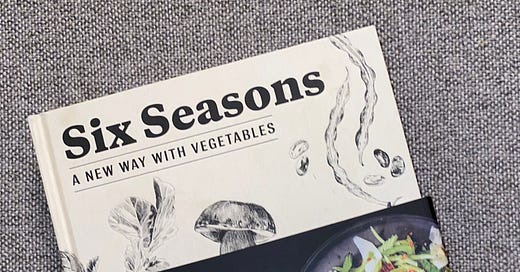



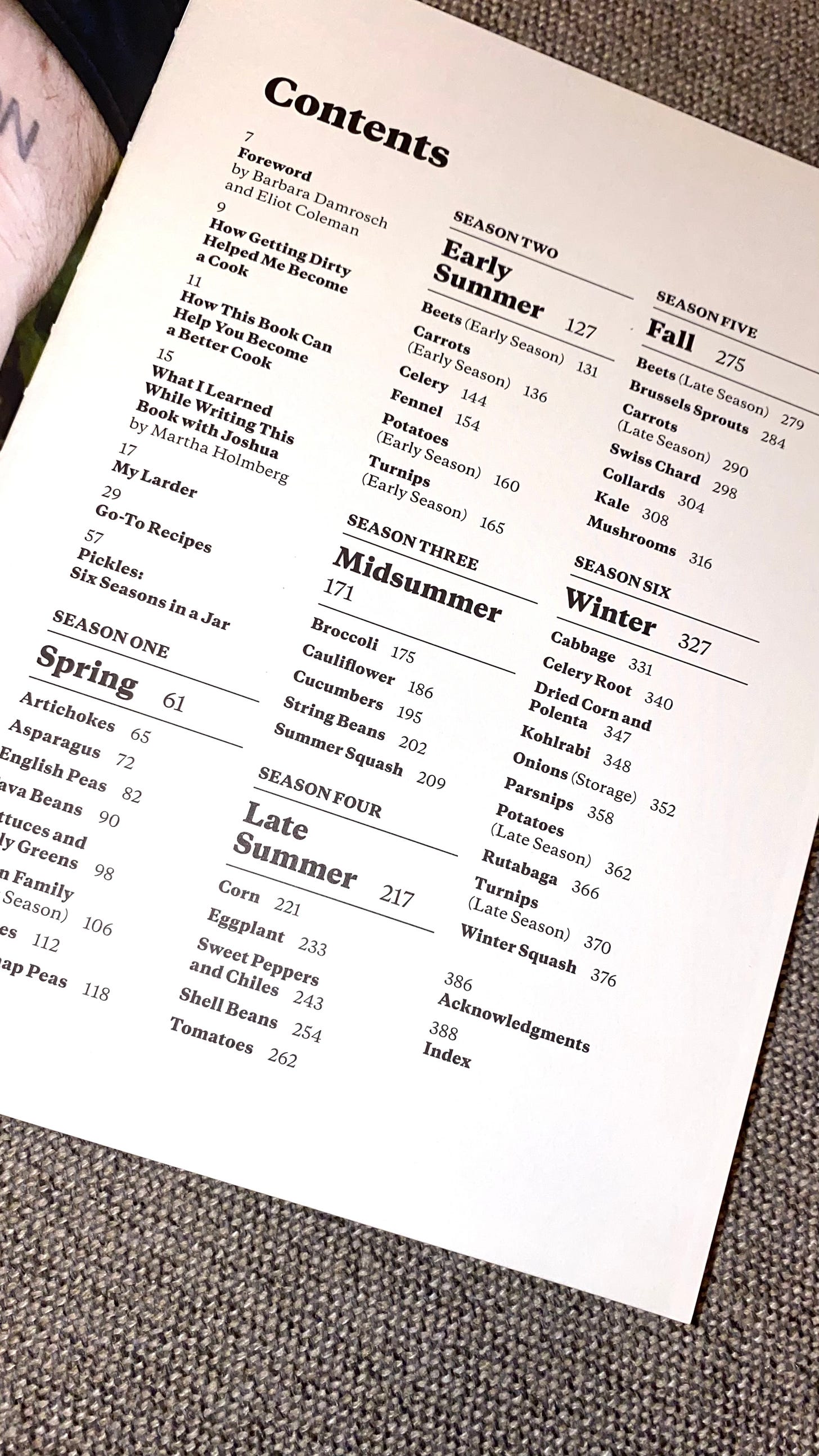
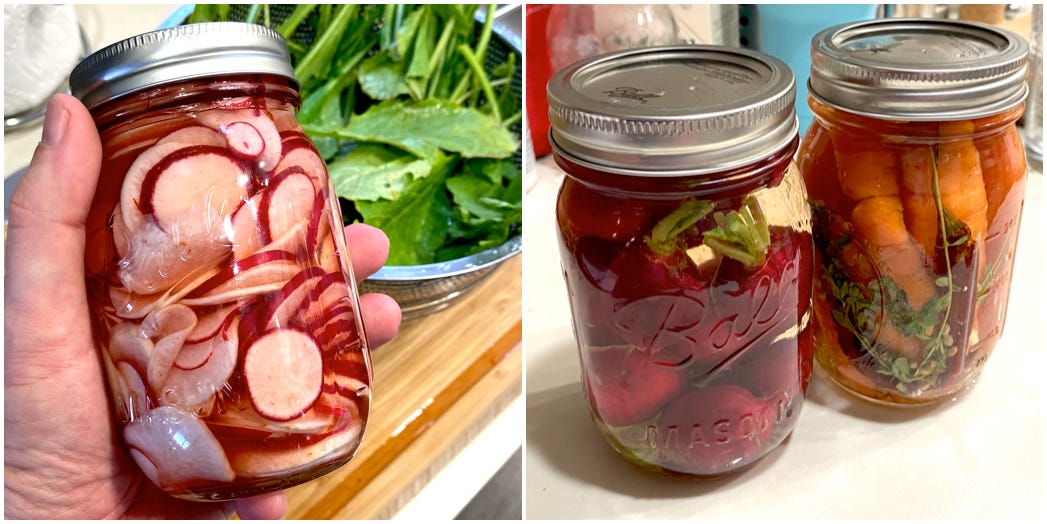
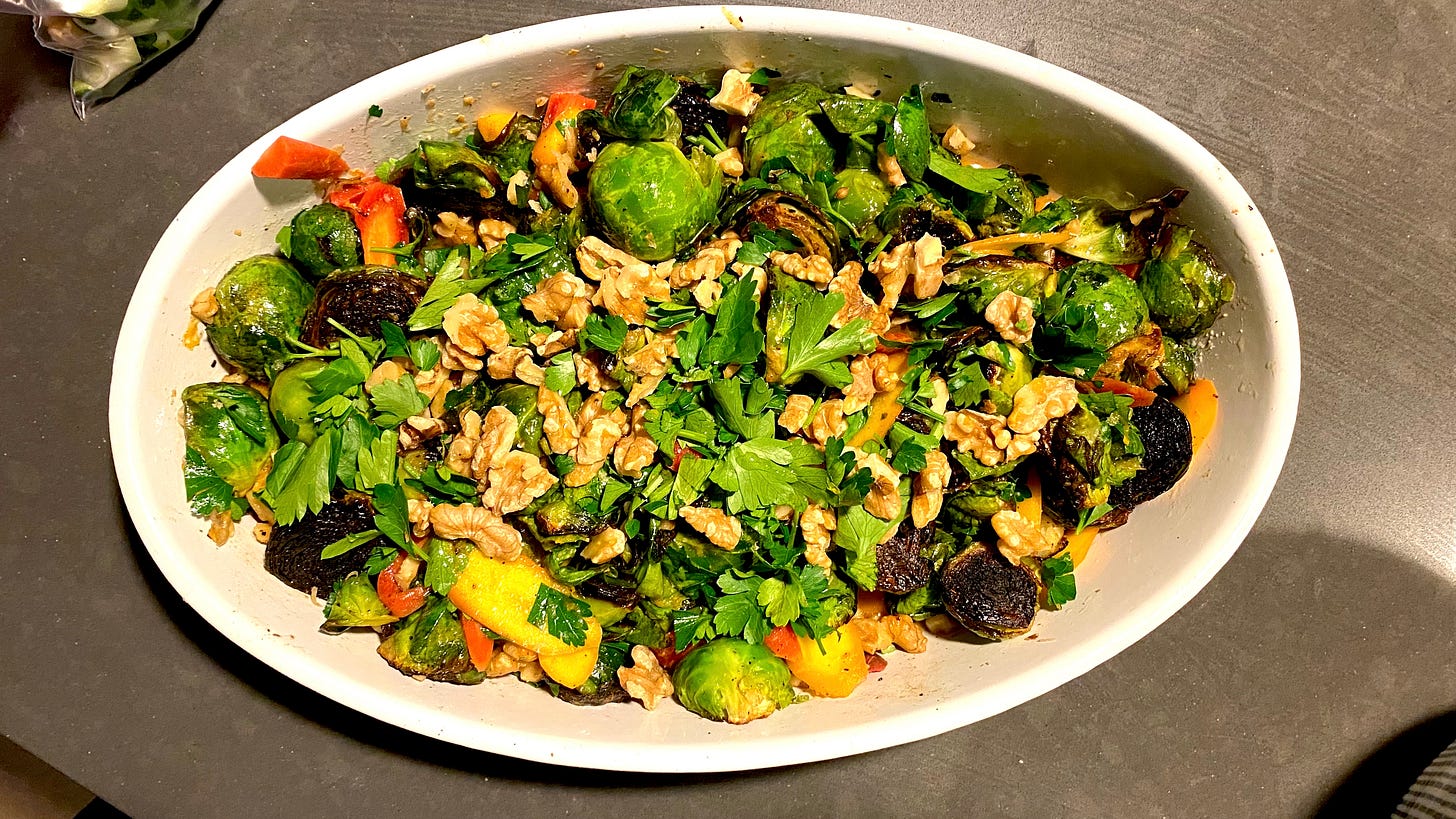
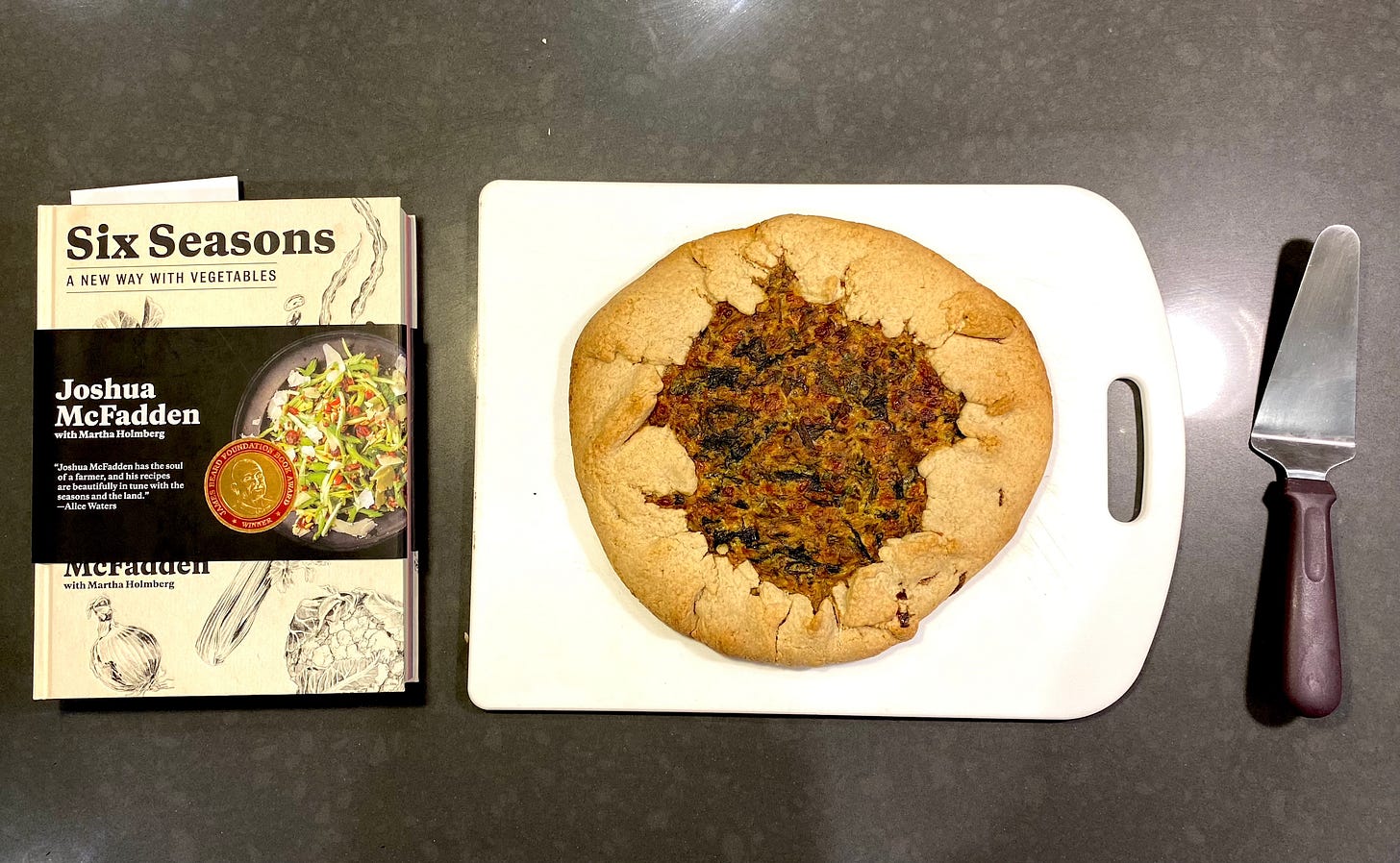
Ben, you are definitely a gifted food writer. I reached out to buy this instantly. I am pretty sure you had me at “bright salad.” I’m so glad that you mentioned this Substack on the podcast; reading your various food thoughts has been illuminating AND fun.
Good luck! And thank you for this book rec. My version of "vegging out" is holding my nose and scarfing down raw lettuce before my taste buds notice. I'm in desperate need of finding new ways to consume (and enjoy) more veggies. This books sounds like a great resource. I'm especially interested in the pickling!